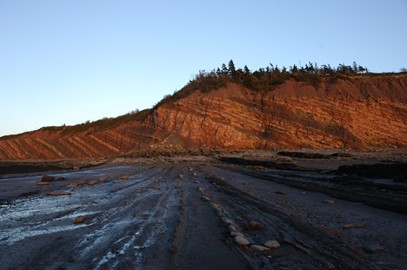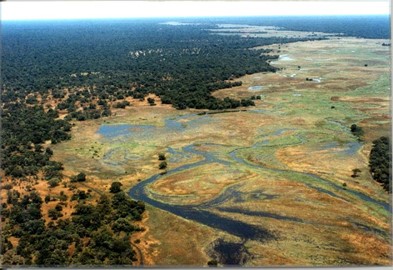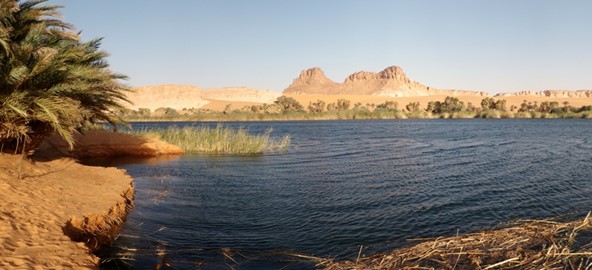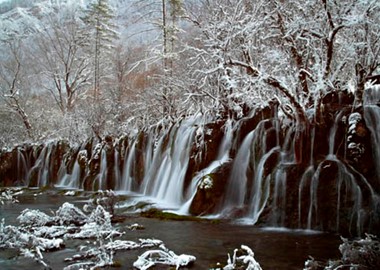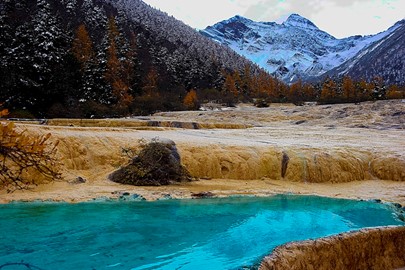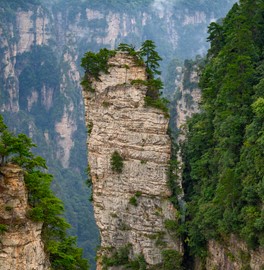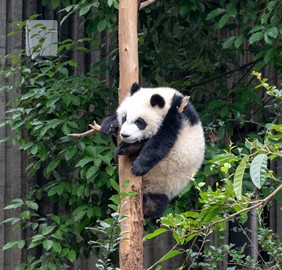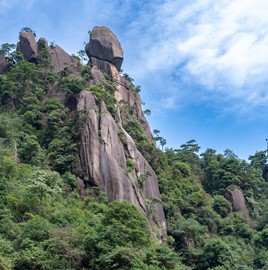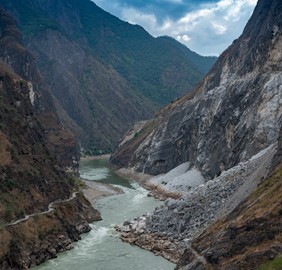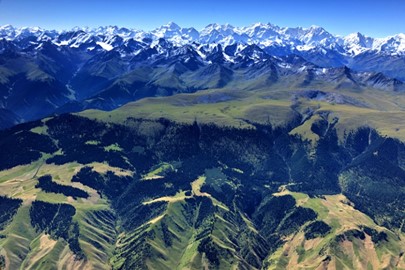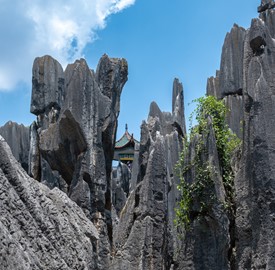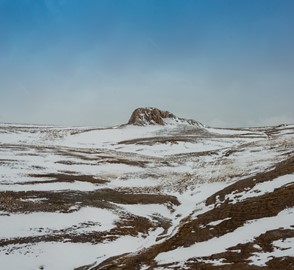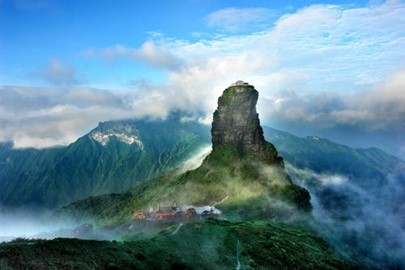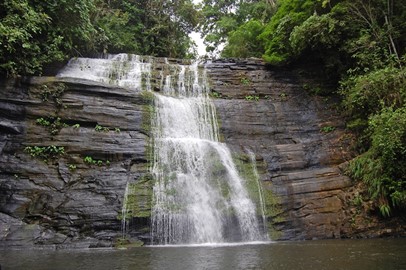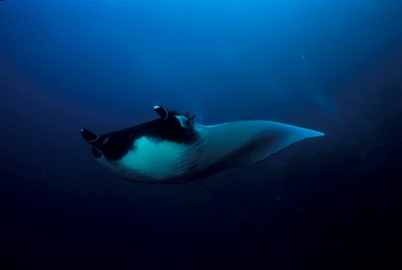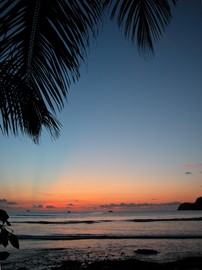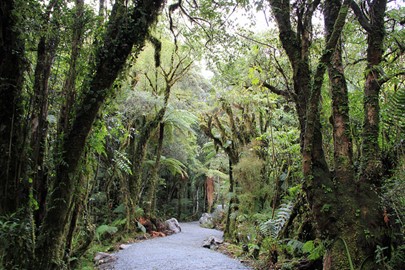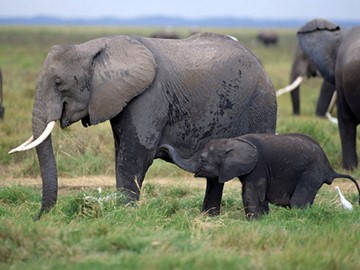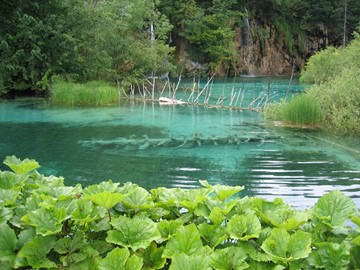category :: natural
Joggins Fossil Cliffs
Joggins Fossil Cliffs, a UNESCO World Heritage site in Canada, are a 300-million-year-old coastal treasure from the Carboniferous period. Renowned for their fossilized forests, early reptiles, and the oldest known tracks of land animals, these cliffs offer an unparalleled record of life during the 'Coal Age.' Recognized for their scientific value, they stand as a window into Earth’s ancient ecosystems.
Mistaken Point
Mistaken Point, a UNESCO World Heritage site in Canada, is a 565-million-year-old fossil site preserving Earth’s earliest complex multicellular life from the Ediacaran period. Its rocky shores hold impressions of ancient, soft-bodied organisms, offering a rare glimpse into life before the Cambrian explosion. Recognized for its scientific value, it stands as a critical record of evolutionary history.
Manovo Gounda St Floris
Manovo-Gounda St Floris, a UNESCO World Heritage site in the Central African Republic, is a vast savanna park renowned for its rich biodiversity and ecological significance. Home to iconic species like black rhinoceroses, elephants, leopards, and red-fronted gazelles, it straddles two ecological zones, blending East and West African savanna species with southern forest communities. Inscribed in 1988 for its natural wealth, it has been on the List of World Heritage in Danger since 1997 due to poaching and se... Read More
Lakes of Ounianga
The Lakes of Ounianga, a UNESCO World Heritage site in Chad, are a stunning cluster of 18 desert lakes sustained by ancient groundwater in the hyper-arid Sahara. Ranging from freshwater to hypersaline, their vivid colors and unique ecosystems defy the surrounding arid landscape, supporting diverse aquatic life and rare species. Recognized for their geological and natural significance, they stand as a remarkable testament to environmental resilience.
Jiuzhaigou Valley
Jiuzhaigou Valley, a UNESCO World Heritage site in China, is a pristine natural wonder renowned for its vibrant turquoise lakes, cascading waterfalls, and snow-capped peaks. This biodiverse haven, home to rare species like the giant panda, showcases stunning karst landscapes and crystal-clear waters shaped by glacial activity. Recognized for its ecological and scenic value, it stands as a breathtaking testament to nature’s beauty.
Huanglong
Huanglong, a UNESCO World Heritage site in China, is a stunning karst landscape famed for its colorful travertine pools, terraced waterfalls, and alpine forests. Nestled beneath snow-capped peaks, this pristine site supports diverse wildlife, including the endangered Sichuan golden monkey. Recognized for its natural beauty and ecological significance, it stands as a vibrant showcase of geological splendor.
Wulingyuan
Wulingyuan, a UNESCO World Heritage site in China, is renowned for its breathtaking natural beauty, featuring over 3,000 quartzite sandstone pillars and peaks, many rising dramatically above lush valleys and streams. This geological wonder, formed over millions of years, includes misty cliffs, deep ravines, and cascading waterfalls, complemented by diverse flora and fauna. Its unique landscape has inspired cultural works, including traditional Chinese art and modern films, making it a globally celebrated de... Read More
Sichuan Giant Panda
The Sichuan Giant Panda site, a UNESCO World Heritage site in China, is a vital conservation area protecting the iconic giant panda and its bamboo-rich habitat. Spanning lush forests and rugged mountains, it supports a diverse ecosystem with rare species like the red panda and snow leopard. This natural sanctuary highlights global efforts to preserve biodiversity and the beloved panda’s cultural significance.
Mount Sanqingshan
Mount Sanqingshan, a UNESCO World Heritage site in China, is a sacred Taoist mountain renowned for its dramatic granite peaks, twisted pines, and misty landscapes. Home to ancient temples and diverse flora and fauna, it blends natural splendor with spiritual significance. Its striking geological formations and serene beauty make it a revered destination for pilgrims and nature enthusiasts alike.
China Danxia
China Danxia, a UNESCO World Heritage site in China, is a striking geological landscape of vibrant red sandstone formations, sculpted into dramatic cliffs, peaks, and valleys. Formed over millions of years, its colorful layers and unique shapes create a surreal natural spectacle. Rich in biodiversity, this site blends scientific wonder with breathtaking beauty, captivating geologists and travelers alike.
Three Parallel Rivers of Yunnan
The Three Parallel Rivers of Yunnan, a UNESCO World Heritage site in China, is a dramatic landscape where three major rivers carve deep gorges through towering mountains. This unique geological formation supports an extraordinary range of ecosystems, from alpine peaks to subtropical forests, hosting rare species like the snow leopard. Its stunning natural beauty and biodiversity make it a global treasure of ecological significance.
Chengjiang Fossil Site
The Chengjiang Fossil Site, a UNESCO World Heritage site in China, is a remarkable paleontological treasure preserving fossils from 520 million years ago. Known for its exquisitely detailed soft-bodied organisms, it offers critical insights into the Cambrian Explosion, a pivotal evolutionary event. This ancient snapshot of early marine life captivates scientists and highlights Earth’s biological history.
Xinjiang Tianshan
Xinjiang Tianshan, a UNESCO World Heritage site in China, is a majestic mountain range featuring snow-capped peaks, deep valleys, and vibrant alpine meadows. Spanning diverse ecosystems, it supports unique flora and fauna, including rare species like the snow leopard. This stunning natural landscape showcases geological splendor and ecological richness, drawing adventurers and conservationists alike.
South China Karst
The South China Karst, a UNESCO World Heritage site in China, is a spectacular landscape of limestone peaks, caves, and underground rivers sculpted over millions of years. Featuring dramatic towers, lush valleys, and hidden grottoes, it showcases one of Earth’s most striking karst formations. Rich in biodiversity, this natural wonder blends geological beauty with ecological significance.
Hubei Shennongjia
Hubei Shennongjia, a UNESCO World Heritage site in China, is renowned for protecting the largest primary forests in Central China and its exceptional biodiversity. Located in Hubei Province, it serves as a critical habitat for rare and endangered species, including the Chinese Giant Salamander, Golden Snub-nosed Monkey, and Clouded Leopard. Recognized in 2016, this natural wonder also holds historical significance as a key site for botanical research since the 19th century.
Qinghai Hoh Xil
Qinghai Hoh Xil, a UNESCO World Heritage site in China, is a vast, remote plateau renowned for its untouched wilderness and unique high-altitude ecosystem. Home to the endangered Tibetan antelope and other rare species, it features sprawling steppes, rugged mountains, and pristine lakes. This starkly beautiful landscape highlights nature’s resilience and ecological significance.
Fanjingshan
Fanjingshan, a UNESCO World Heritage site in China, is renowned for its unique biodiversity and striking geological formations. This sacred mountain hosts rare species like the Guizhou snub-nosed monkey and ancient fir trees, thriving in its misty, subtropical climate. Its dramatic peaks, including the iconic Red Cloud Golden Summit, attract visitors for both their natural beauty and spiritual significance tied to Buddhist heritage.
Los Katíos
Los Katíos National Park, a UNESCO World Heritage site in Colombia, is a biodiversity hotspot renowned for its rich ecosystems, including tropical rainforests, wetlands, and rivers. It serves as a critical habitat for numerous species, such as jaguars, tapirs, and rare primates, alongside a variety of migratory birds. The park also holds cultural significance, with archaeological evidence of pre-Columbian communities, making it a vital link to Colombia’s natural and historical legacy. Its unique geography a... Read More
Malpelo Fauna and Flora Sanctuary
The Malpelo Flora and Fauna Sanctuary, a UNESCO World Heritage Site in Colombia, is a remote marine park in the Eastern Tropical Pacific, renowned for its exceptional biodiversity. This protected area serves as a critical habitat for threatened marine species, including large aggregations of hammerhead and silky sharks, whale sharks, giant grouper, and billfish, thriving in an undisturbed environment. Its rugged underwater landscapes, featuring steep walls and caves, make it one of the world’s premier divin... Read More
Cocos Island
Cocos Island, a UNESCO World Heritage site in Costa Rica, is a pristine marine and terrestrial ecosystem renowned for its exceptional biodiversity. Located in the Pacific Ocean, it hosts a variety of endemic species, vibrant coral reefs, and large populations of marine life, including sharks, rays, and dolphins. The island’s rugged, uninhabited terrain and surrounding waters make it a critical conservation area and a top destination for scientific research and eco-tourism. Its isolation has preserved its na... Read More
Guanacaste
Guanacaste, a UNESCO World Heritage site in Costa Rica, is renowned for its rich biodiversity and well-preserved tropical dry forests. This protected region showcases a variety of ecosystems, including wetlands, grasslands, and oak forests, supporting numerous species of plants and animals, some of which are endemic. Its cultural significance is tied to traditional cattle ranching practices and historical haciendas, reflecting the area's deep-rooted heritage. The site's conservation efforts highlight its im... Read More
Taï National Park
Taï National Park, a UNESCO World Heritage Site in Côte d'Ivoire, is renowned for preserving one of the last significant expanses of primary rainforest in West Africa. Recognized in 1982, it harbors a remarkable diversity of flora and fauna, including endangered species like the pygmy hippopotamus and unique chimpanzee populations known for tool use. Its rich biodiversity and high rate of endemism make it a critical conservation area and a valuable scientific resource.
Comoé
Comoé National Park, a UNESCO World Heritage site in Côte d'Ivoire, is renowned for its exceptional biodiversity and unique ecosystems. Located in the northeast of the country, it features a diverse range of habitats, including savannas, gallery forests, and wetlands, owing to the presence of the Comoé River. This park is home to a variety of wildlife, such as elephants, chimpanzees, and numerous bird species, making it a critical conservation area in West Africa. Inscribed in 1983, it highlights the region... Read More
Plitvice Lakes
Plitvice Lakes, a UNESCO World Heritage site in Croatia, is renowned for its stunning natural beauty, featuring a series of cascading lakes and waterfalls interconnected by lush forests and wooden walkways. The site is celebrated for its unique geological formations, vibrant turquoise waters, and diverse ecosystem, which includes rare flora and fauna. Established as a national park in 1949, it attracts visitors year-round for its picturesque landscapes and serene environment, offering a remarkable example o... Read More
Alejandro de Humboldt National Park
Alejandro de Humboldt National Park, a UNESCO World Heritage Site in Cuba, is renowned for its exceptional biodiversity and complex ecosystems. Named after the German scientist Alexander von Humboldt, who explored the island in the early 19th century, the park features a diverse range of flora and fauna, including numerous endemic species found nowhere else on Earth. Its varied topography, from lush rainforests to coastal landscapes, supports unique evolutionary processes, making it a critical conservation ... Read More
